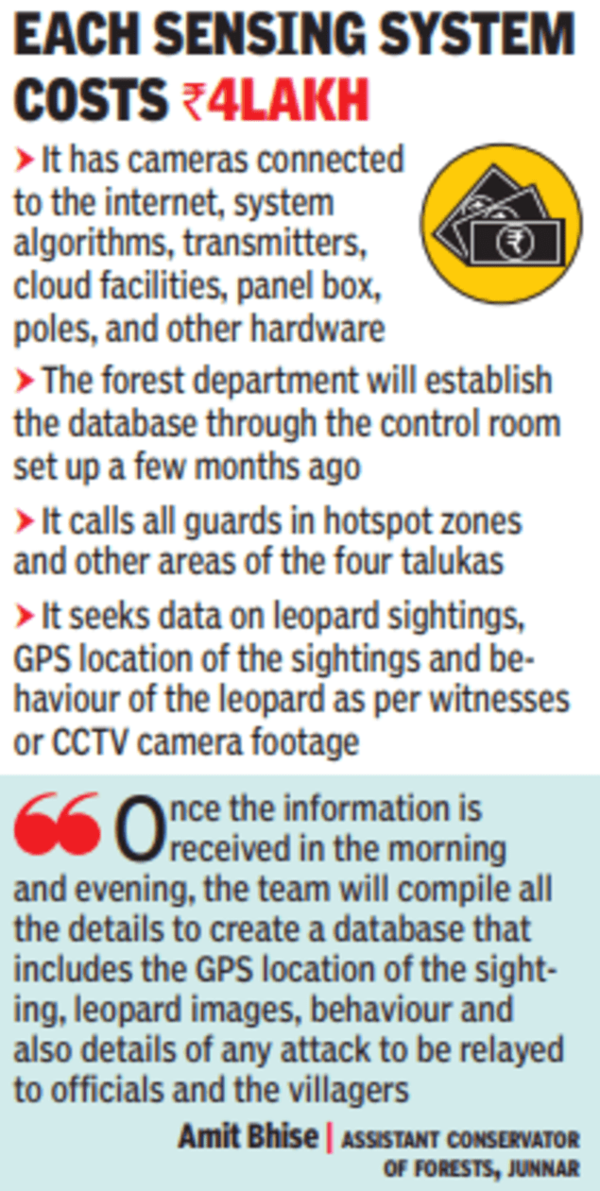AI-based alerts on leopard sightings that work in Tadoba come to Pune district landscape for trials

PUNE: Artificial intelligence systems to alert officials and villagers of leopard sightings based on behaviour is an idea the Junnar division of the forest department may consider.
The project will have camera traps installed at several locations which can capture images of leopards or any animal up to a distance of 500m. These cameras will then transfer the images through an IoT platform to a cloud server where it will be processed through an AI mechanism.
The mechanism will compare the obtained image with a database of leopard images, locations which will help identify the behaviour and time while also tracking leopard movements.
Once the behaviour and movement are identified, alerts and alarms will be sent via emails and messages on registered cellphone numbers of forest officials and local villagers close to the location of the sighting.

Though encouraging, there are hurdles. During a field visit by the engineers, it was determined that it was a task bigger than it seemed. Houses located amidst the sugar cane fields where leopards thrive, did not give enough space for the time frame to send alerts. Piyush Dhulia, programme director of Valiance Solutions, said, “These houses are located not even 10m from their fields. We need a time frame of three seconds to send the alerts from the satellite, but this is not enough as the leopard will be at their doorstep.”
Valiance Solutions had proposed the system in Junnar to the forest department after observing a reduction in the number of conflicts between humans and tigers near Tadoba Andhari Tiger Reserve.
The firm has replicated it in 13 more villages around the reserve along with Manas Tiger Reserve and Corbett National Park.
The systems located in Tadoba were at least 200m from human settlements and gave the ideal time frame for the signal to reach the cloud for a comparison of images to occur to identify behaviours and then send alerts.
Thermal cameras may not work in Junnar due to the high density of sugar cane and high water content in the fields where the leopards are located. Hence, the team may have to use specialised vision cameras instead.
The houses are located individually instead of in clusters as opposed to village settlements near the Tadoba tiger reserve. “In this case, almost every house needs a system,” Dhulai said.
Forest officials visiting villages in the hotspots and small hamlets of Junnar take details of their families and GPS locations of their houses, including leopard attacks.
Assistant conservator of forests in Junnar Amit Bhise, said, “We will map all these houses and plot them to create a distinct map of the hotspots to understand the leopard attack activity and their movements.”
Narayangaon, Umraj and Bori will get the first such systems on a trial as human habitats are at a distance and leopard movement can be observed. Deputy conservator of forests Amol Satpute said they set up the first one in Bori which has a high leopard density.
Dhulai said its success in Junnar will depend on the number of alerts sent to forest officials and villagers in the time frame and adjusted according to the landscape which is different from Tadoba’s.



